|
|
|
|
|
 |
|
 |
 |
|
|
|
Time line of Kempo Karate
520 A.D.
Bodhidharma, a Buddhist monk from India, travels to the Shaolin ( "young forest" ) Temple in the Hunan province
of China. Bodhidharma, also known as Daruma or Tamo, is instructed to resurrect the fading spirituality of the monks at the
temple. The monks had become spiritually and physically decrepit, so much so that many had to be assisted in feeding and relieving
themselves. Bodhidharma teaches the monks a series of physical movements called "Shih Pa Lo Han So", or "The Eighteen Hands
of Lo Han".
560
Legend states that a Shaolin priest known as "The Begging Monk" uses various hand and foot techniques to fend
off attackers at the monastery (killing a few of the intruders!). Other monks were so impressed, they wanted to learn the
techniques. The art of "flowery hands" or "fist way" is born. In the native language, the techniques are known as "Chuan Fa".
600 - 1500
These centuries saw vast migrations of monks, who were either driven out of China by emperors, invaders, or
left in an attempt to spread Buddhism. The migrations of these monks brings Chuan Fa, in it's many names because of families
adding their clan names to the variation they practiced, to Okinawa and Japan.
1500 - 1900
The Kumamoto and Nagasaki clans in Kyushu, Japan develop Kempo from Chinese Chuan Fa. Over several generations,
Kempo becomes Kosho Ryu ( "Ko" - old, "Sho" - pine tree, "Ryu" - school) Kempo. During this time period, traceable members
of the Yoshida (originally "Urabe") clan, also from Kyushu, continue developing Kosho Ryu Kempo and passing it on.
1912
Kiyoka Yoshida (born August 1st, 1890 - 1944) marries Otokichi Mitose (born 1863 - died 1937) in Hawaii. In
actuality, they marry via correspondence for immigration purposes earlier that year. Their son, Masayoshi "James" Mitose,
would become the first Great Grand Master of the Yoshida clan not born with the Yoshida name. The Yoshida code is, "I come
to you with only open hands, other weapons, I have not. But should right or honor require it, my hands will bear me out."
1920
On October 22nd, Masayoshi "James" Mitose (born December 30th, 1916 March 26th, 1981) returns to Kyushu, Japan
to study his mother's family art at a temple on Mount Kinkai. Mitose is taught by his maternal Grandfather, Sukuhei Yoshida
(born 1853-1936), and his uncle, Choki Motobu.
1937
On February 7th, 1937 Mitose returns to Hawaii. Soon after his arrival, Mitose opens the "Official Self Defense
Club" at the Beretania Mission in Honolulu, Hawaii. While teaching Kosho Ryu Kempo, Mitose makes perhaps his greatest contribution
to martial arts by opening his dojo to those of any ethnicity, including females. One of Mitose's students is William Chow.
1949
William K.S. Chow (born June 3rd, 1914 - died September 21st, 1987), with Mitose's blessings, forms the Dian
Hsuhe Go Shinjutsu Kenpo Kai Karate Association. Chow adds many practical, street tested self-defense techniques to the system.
Prior to his death, Chow renames the style "Kara-Ho Kempo". "Kara" refers to the Tang dynasty of China, "Ho" represents the
holistic, or multi-faceted spirit of martial arts. The "M" replacing the "N" in Kempo is another reference to the Chinese
origin of the style which Chow wishes to pay homage. One of the students that Chow brought with him from Mitose's school was
Adriano Emperado. NOTE: Another of Chow's students was Edmund "Ed" Parker, who later developed the "American Kenpo" system
which played a large role in the popularization of martial arts in America during the late 1960s and throughout the 1970s.
1950
Adriano Emperado (born June 15th, 1926), while studying with William Chow in the late 1940s, begins meeting
with other martial artists to compare styles and techniques. By combining the five different styles, they develop KAJUKENBO
from KArate, JUdo/JUjitsu, KENpo, and Chinese BOxing. 1950, Emperado opens the first Kajukenbo
school at the Palama Settlement on Oahu Island. Emperado's training is often intense, so much so that his motto becomes "The
training isn't over until there is blood on the floor." One of Emperado's students is Victor "Sonny" Gascon.
1958
Sonny Gascon (1933- )opens a Kajukenbo school in Pasadena, California. After a dispute with some Kajukenbo
representatives, NOT affiliated with Emperado, Gascon decides to change the name of his style to "Karazenpo Go Shinjutsu".
Gascon organizes the system of katas (1-5) and combinations(1-26, etc.). In 1963, Gascon closes his studio, and eventually
returns to Hawaii (1968). One of Gascon's students (starting in 1958 and receiving his Shodan in 1962) is
S. G. Pesare.
1963
S. G. Pesare (born 1939- ) opens a Karazenpo Go Shinjutsu school in Olnyville, Rhode Island. About 1963 Nick
Cerio began Kajukenbo training under
Mr. Pesare 1966 he earned his first black belt and opened his first Kenpo school. Mr. Cerio was maybe the most
famous student Mr. Pesare ever had.
1965
Cal Carozzi At 14 years old, started in one of the few karate schools that were in Massachusetts at
the time. The art of Shodokan Karate. After attaining a rank of Brown Belt, he moved on, and met a man from Central Europe
and became friends. This 150-pound Albanian held a fifth-degree Master level in Aikido. Practicing on his own, he then began
studying Kempo with Fred Villari
After attaining the rank of senior Master level (7th dan), and teaching hundreds of Black Belts GrandMaster
Carozzi has now aligned himself with another one of his senior instructors, Professor Charles Mattera.
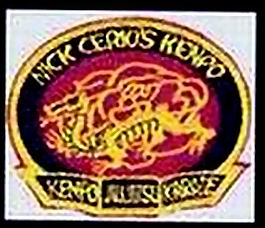
1966
Prof. Nick Cerio (born 1936 - October 7th, 1998 R.I.P.) opens "Nick Cerio's
Kenpo" in Warrick, Rhode Island shortly after receiving his black belt. Cerio then studies with William Chow's student, William
Chun, then with Chow himself. Cerio receives his Shodan from Chow on August 15th, 1967. Nick Cerio continued to study with
Pesare, Chow, Ed Parker, and many other masters, distinguishing himself worldwide. In 1989, Cerio receives his professorship
designation, and his 10th Dan. He is also deemed "Above Ranking Status" by the World Council of Sokes.
-
Starting in about 1958 Professor Cerio studied Boxing and Tae-Kwon-Do
About 1962 Professor Cerio began Kajukenbo training under George Pesare
1966 he earned his first black belt and opened his first Kenpo Karate school. He studied Chung-Do-Kwan under
Ernest Lieb, Hakkoryu Jiujitsu under James Benko and American Kenpo under Master Ed Parker and assisted in running the New England branch of the International Kenpo Karate Association.
-
1966 Professor Cerio was introduced to Professor William K.S. Chow.
1971 Professor William K.S. Chow awarded Prof. Cerio his 5th Degree Black Belt.
1973 Kung Fu Master Gan Fong Chin awarded Prof. Cerio his 8th Degree Black Belt in Karate based on his ability
and the Title of Sifu in Kung-Fu, the first of only 3 certifications by Chin.
1983 Ed Parker awarded Prof. Cerio his 9th Degree Black Belt in the International Kenpo Karate Association.
1989 Prof. Cerio was presented a plaque by Professor Thomas H. Burdine designating Cerio with his Professorship.
Also in 1989 Prof. Cerio was awarded the "Above Ranking Status" by the " by the World Council of Sokes. This is when
he received his 10th
Instead of picking a single direct Soke-Designate, in December of 1997, Mr. Cerio formed an Executive Board to assist in running his organization. This group of five
senior instructors were to continue the system after Mr. Cerio's death.
The Original five members were as follows:Shihan Joe Nesta Shihan
Craig Seavey, Shihan John James, Shihan Mark Sheeley, and Sensei Maryanne Weeden.
-
These people were picked by Mr. Cerio based on character, time in the system, and his personal
trust in them.
-
The Second Executive Board consisted of:
Shihan Clemonte Poulin
Shihan Joe Nesta
Shihan Craig Seavey
Shihan John James
Sensei Maryann Weeden
The Current N.C.K. Executive Board consists of :
Shihan Clemonte Poulin
Hanshi Craig Seavey
Shihan John James
Sensei Maryann Weeden
1968
The young Mr. Nesta begins he's training in the martial way.
Shihan Joe Nesta, is recognized internationally for his contribution and expertise in the martial arts. Shihan Nesta is a
martial artist at heart. He began training at age 12 and has dedicated 35 years to studying the martial arts. He holds the
highest Rank in Nick Cerio's Kenpo in the U.S, a 9th Degree Black Belt in Buke-Do Kenpo, a 6th Degree in American Kenpo, and
a 1st Degree in Shotokan, Jiu-Jitsu, and Aikido. He is currently studying Hakko-Ryu Jiu-Jitsu and Botukukai. Shihan Nesta
is renowned for his proficiency in numerous martial arts styles and oriental weaponry. Shihan Nesta was inducted into the
World Martial Arts Hall of Fame on March 25, 2000 and also sits on the Board of Directors for the World Martial Arts Federation.
Time Line
1996 Mr. Pence was awarded the title
of Sensei from Master Carozzi .
1997 This year Sensei Kevin began to teach
seminars as a guest Sensei at other Boston area dojo's.
1998 After 3 years of private and group study
Mrs. Pieroni was promoted to Shodan. This was Sensei Kevin's frist Student to go from White Belt to Black Belt.
1999 Sensei eraned the rank of third degree
Black Belt (5/15/99) in the art of San Chai Na Kempo (Shaolin Chu'an Fa).
2000 Sensei Pence earns Instructor
level three certificate through San Chai Na Kempo Federation 1/1/00. Sensei Opened / takes over his frist dojo United
Shaolin Kempo of Burlington in May 2000.
He also forms San Chai Na incorp. to protect
the name of his mother Art as well as the business of he's dojo. Sensei is the President / C.E.O.
of San Chai Na Incorp. This same year Sensei Kevin began to host major names in the martial arts world. Bill "Superfoot"
Wallace was the frist in Oct. 2000 he would later come back in 2001
2001 Sensei is reconized
Internationally by the World Martial Arts Federation as a 3rd Dan Kempo Karate. On April 30th Sensei
Pence would host a Michael DePasquale Jr. seminar. Soke Dai DePasquale would also pay the dojo more visits in the futrue
in 2002 and 2004. Sensei is also aceptted by Shihan Alty as a Student of Kempo Kempo and Ju Jitsu.
2002 Due to irreconcilable philosophical business
differences with the Board of Master Carozzi's Federation, Sensei Kevin left the Board of the Carozzi Organization.
He then established The Pence Self-Defense Systems, a.k.a. (P.D.K.) Pence Defense Kempo. Sensei is also
aceptted by Shihan Nesta as a Student of Kobudo.(Japanese Weapons)
2003 On Sep. 13th of 2003 Sensei Kevin
W. Pence took and passed the test to become a 4th degree black belt (Yodan) Kempo Karate. After over Nine Thousand hours of
teaching and training (from 3rd to 4th deg.)
Sensei Kevin becomes a Board Member of the World Martial Arts Federation. He was also inducted into the Universal Martial Arts Hall of Fame as the Instructor of the year in Shaolin Kempo 2003, as well as
being inducted into the Karazenpo Go Shinjutsu Black Belt Society of Grandmaster Victor
Sonny Gasscon this same year.
2004 Mr.
Pence is accepted as a Student Instructor under Guro Michael Williams, in the art of Kali.
Great Grand Master Gascon grants Sensei Kevin
the honor of being a part of his Executive Board (Mass) for the Karazenpo Go Shinjutsu Black Belt Society.
This is the same year Sensei was Inducted in to
the U.S.A. Martial Arts Hall of Fame as the man of the year in Kempo and the W.M.A.F. Hall of Fame as Male Martial Artist
of the year.
2005 Sensei Kevin was inducted into the Action Martial Arts Hall of fame for his teaching in Atlantic City with over fourteen hundred people
in atendence at the awards dinner!
Inductee 1st annual International Federation of Ju Jitsuans
I.F.O.J.J. Legion of Honor Bushido Award
In Oct. 2005 Sensei Pence travels to South East
Asia 14 days of training with Guru Drs. Edward Lebe in the art of Baringin Sakti , The art of Oido De Caburate Arnis
with Grandmaster Abraham Gubaton and Dekiti Tirsai Siradas Kali with GrandTuhon "Jerson Nene" Tortal. All of this
was done with Thanks to Mike & May Williams and the group of Artist know as the Martial Arts Research Institute Delagates.
2006 - Recived
pemision from the Martial Arts Reseach Insittute to teach Filipino martial arts ( Kali ) as a Tribal
Leader, as well as the blessings of Grand Tuhon "Nene" Tortal President of
the Philippine Arnis Kali Escrima Federation International Inc. .
2007 - On March 10, 2007 Kevin recieved the rank
of Instructor from Guro Mike and May Williams from The Martial Arts Research Institute in the Combined Cultural
Arts of SouthEast Asia, Philippines - Indonesia - China, ( Kali, Silat, Kung-Fu ).
On May 18th 2007 Soke Di Michale DePasquale Jr.
promoted both Mike Fitzgerald and Kevin to the rank of 5th Dan and Mike to 8th Dan. The
test took place at the Pence Self Defense Dojo in Burlington, MA..
 |
 |
"THE ROOTS OF OUR KEMPO"
Kempo Family Tree
Mitose Family Art
Jiroku
Yoshida (1818-1890) 19th Great Grand Master of Kenpo/Kosho
|
Sukuhei
Yoshida (1853-1936) Sukuhei Yoshida was the father of Kiyok
|
20th Great Grand Master of Kenpo/Kosho Yoshida (1890-1944), and
the Grand Father (and teacher) of Masayoshi Mitose (James)
|
Great
GrandMaster James Mitose (1916- 1983) Kosho Shorei Kempo
|
Great
GrandMaster William K.S. Chow (1914 - 1987)
Dian Hsuhe Go Shinjutsu Kenpo Kai - Kara -Ho
|
Great
GrandMaster Adriano Emperado 1926
Kajukenbo
|
Great GrandMaster Victor "Sonny" Gascon 1933-
Karazenpo Go Shinjutsu
|
Great
GrandMaster George Pesare 1940-
Kaito Gakko
|
Prof. Nick Cerio 1943 - 1998
Cerio Kenpo
|
Grandmaster
Fred Villari
Shaolin Kempo Karate
|
Grandmaster Calvin C. Carozzi Sr. (1950-
United Shaolin
Kempo Karate
San Chai Na Kempo
Pence Self-Defense
Ping Shen Tao
|
10th Gen. U.S.A. Kempo 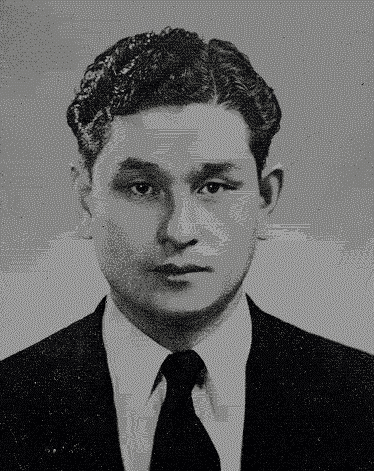
Traditionalists often study what is taught, not what there is to create."
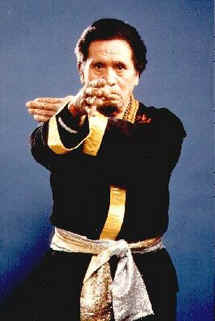
William Chow died in Honolulu on Sept. 21, 1987. Go-Shinjitsu founder William Kwai
Sun Chow
The reason why Kajukenbo practitioners wear black gis is "you didn't have to wash it as often and
it hid the blood stains better!" -- Kajukenbo founder Adriano Emperado

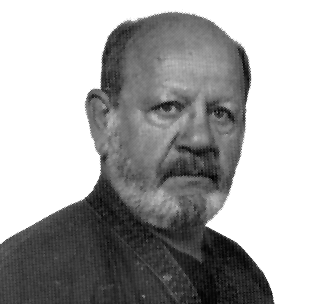
"You see that man over there ... pointing to Prof. Cerio? That's the most dangerous man I've
ever met."- Grandmaster Ed Parker
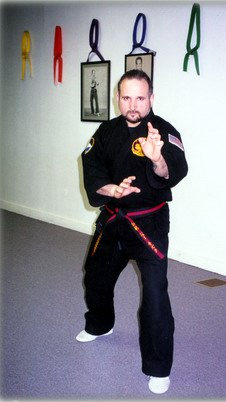
The One who says,"It cannot be done", should not interrupt the one who is doing it.
Shihan Joe Nesta
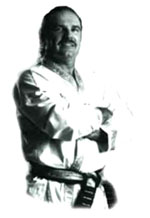
"Kempo fits itself to you, not the other way around." Shaolin Kempo Karate Grandmaster
Fred Villari

|
| G.M. Cal C. Carozzi Sr. |
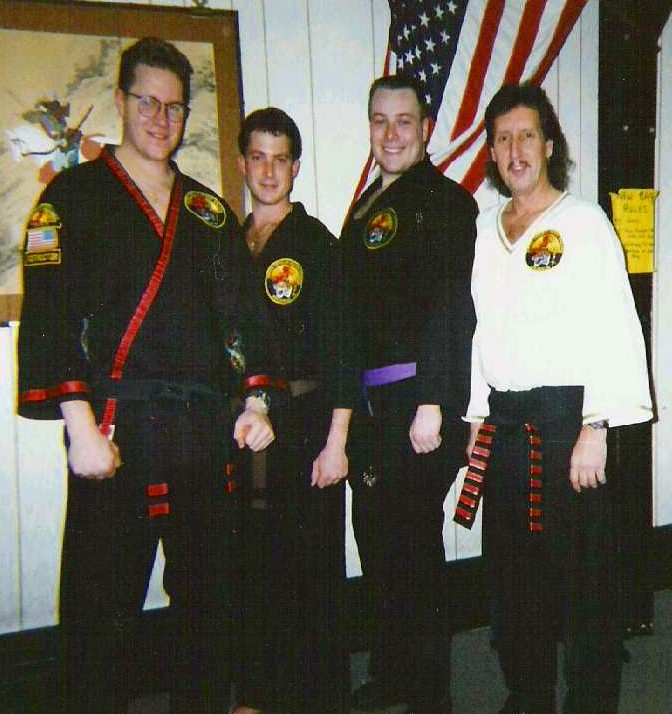
|
| Brothers in Rank 1996 |
It was once said by a great man
"We believe that tradition and new ideas
don't have to be in conflict with one another. We believe that the true tradition of the Shaolin Temple has always encompassed
the need to adapt to new times and places. It is possible to have respect for tradition and an eye toward the future at the
same time. 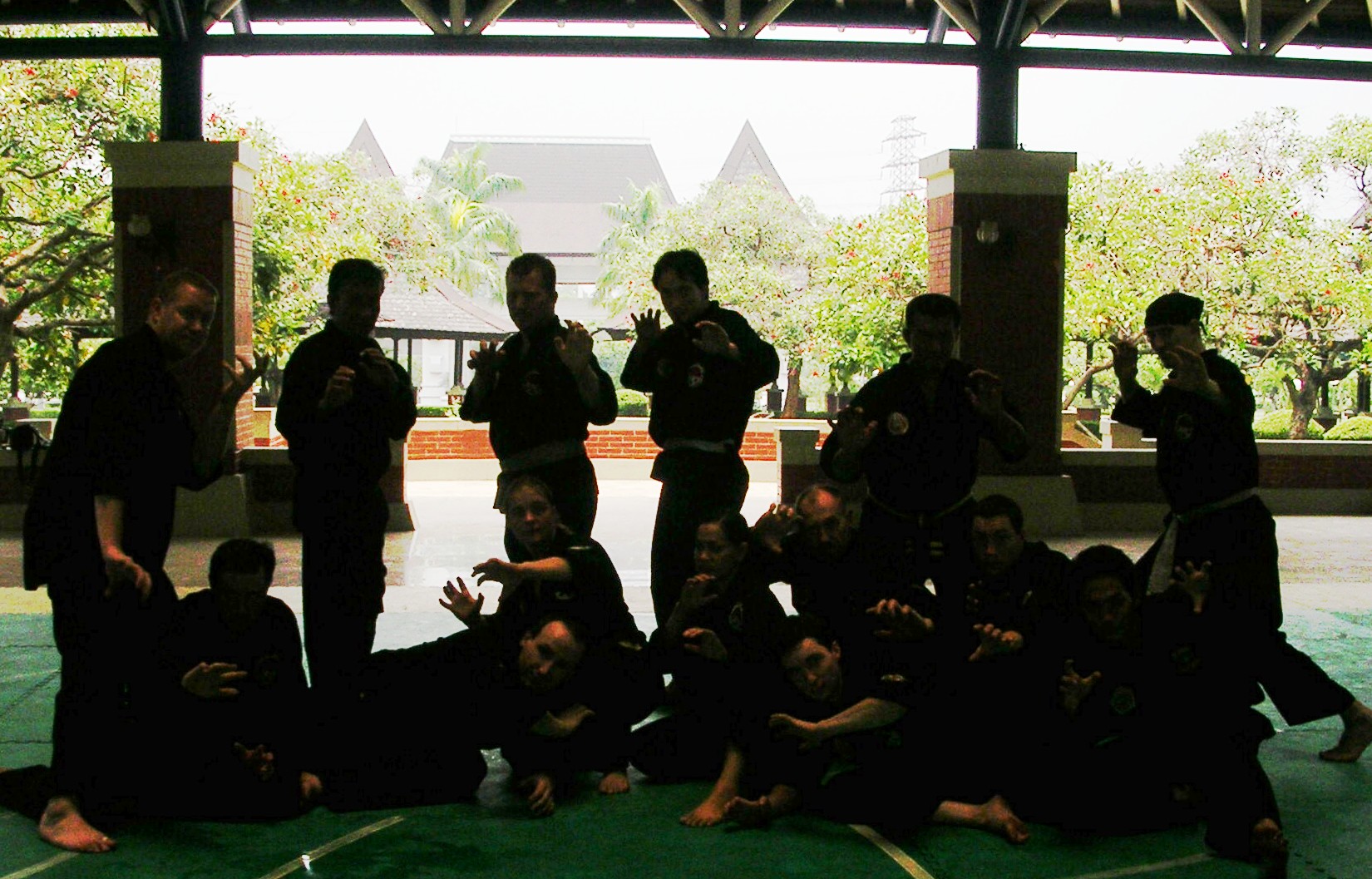
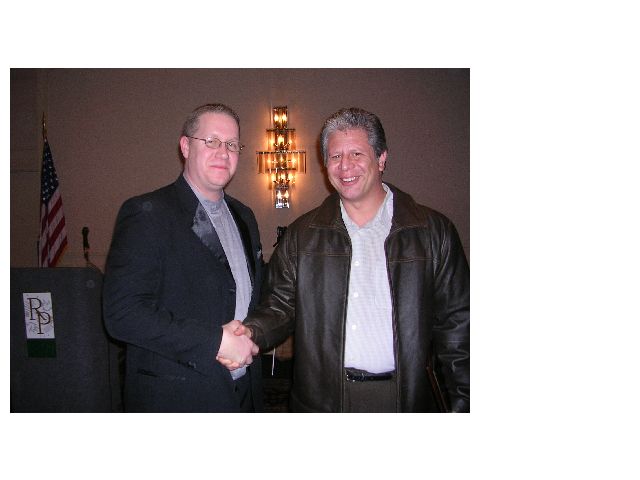
|
| American Kenpo Ambassador Ed ParkerJr. and Sensei KP |
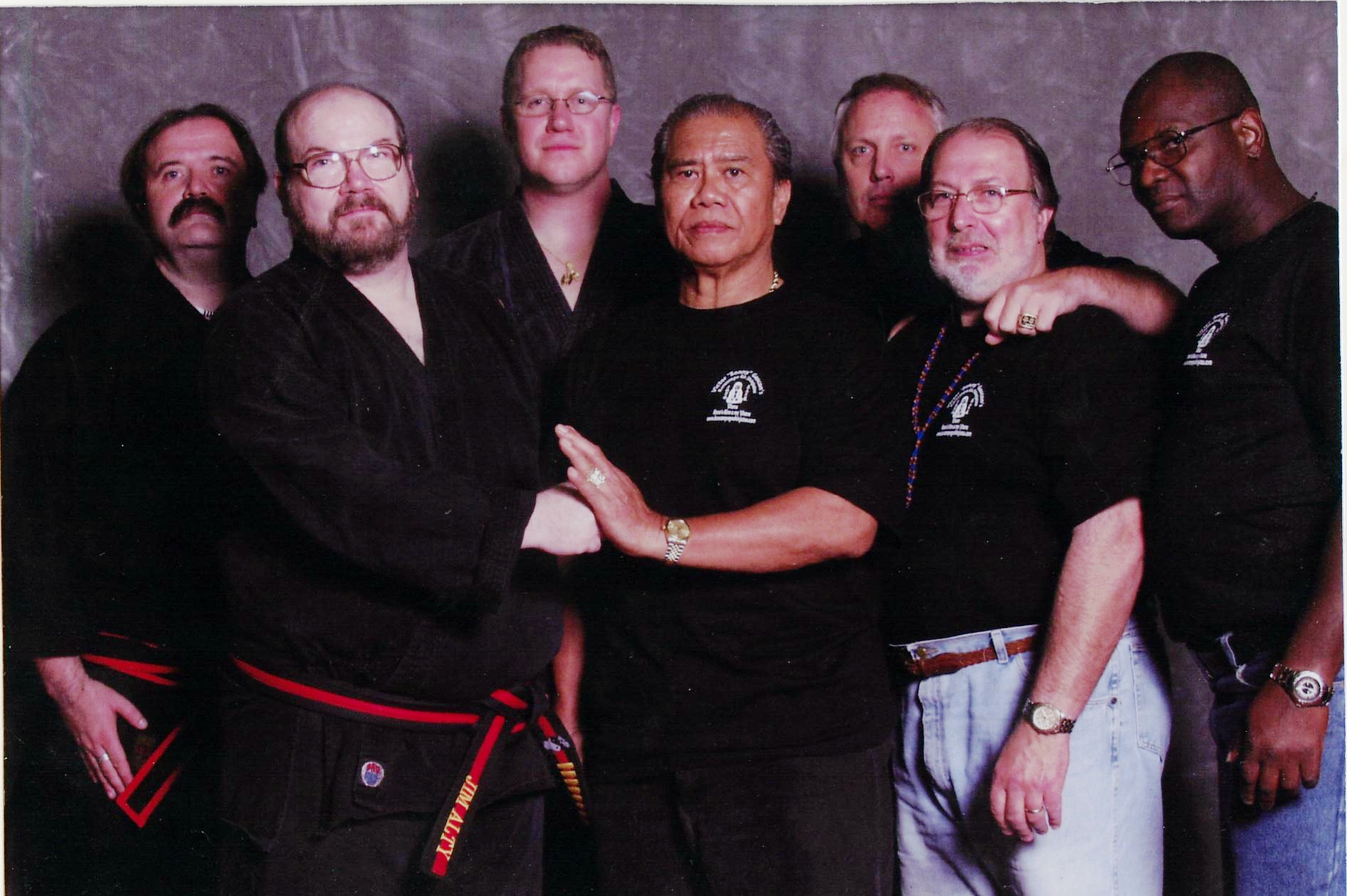
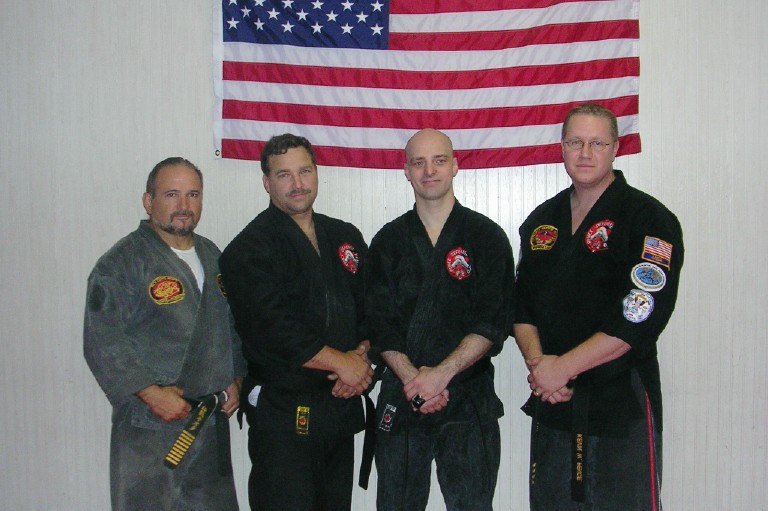
|
| Shihan Nesta, Tom, Nuke,& Kevin Sensei |
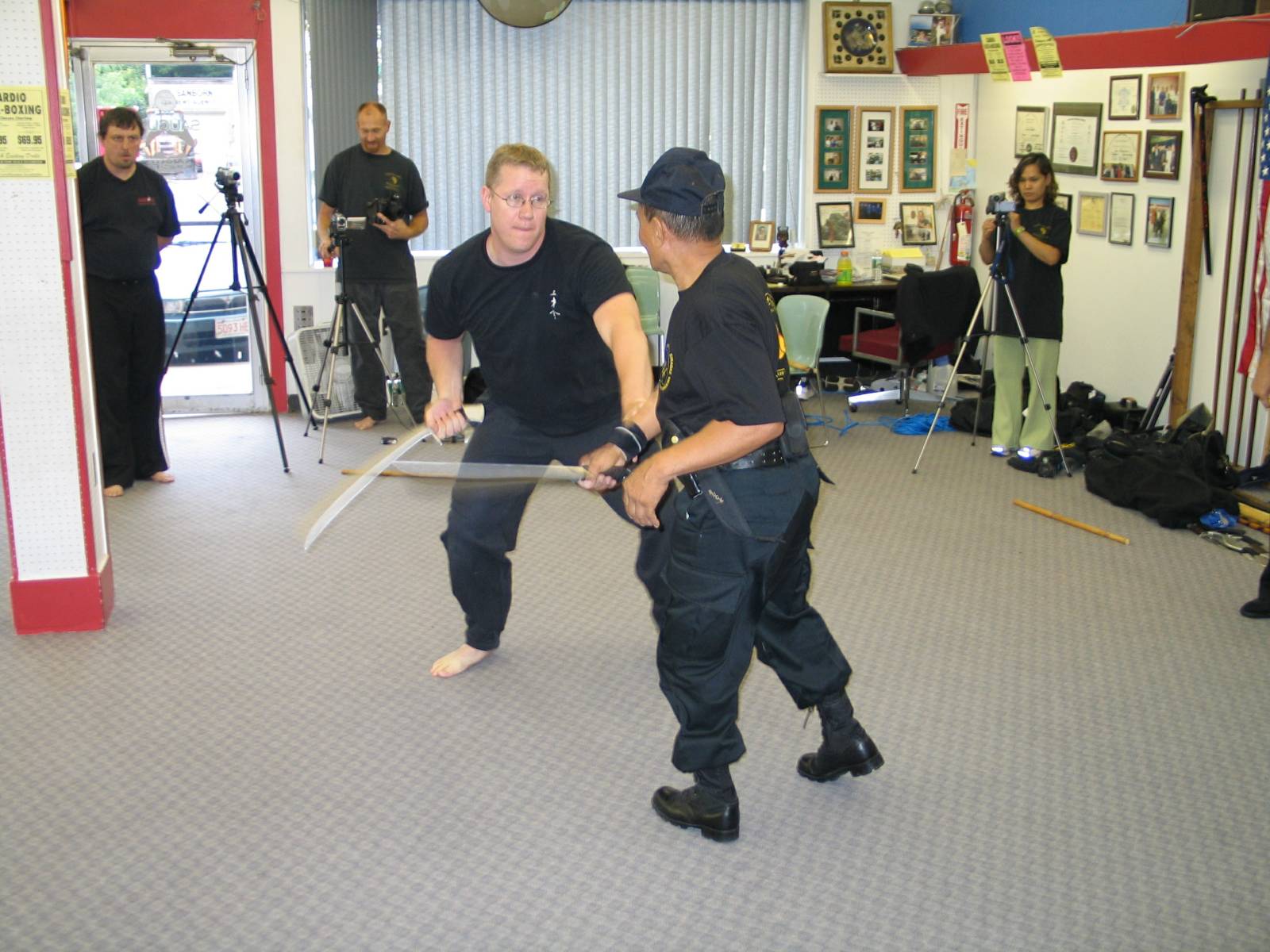
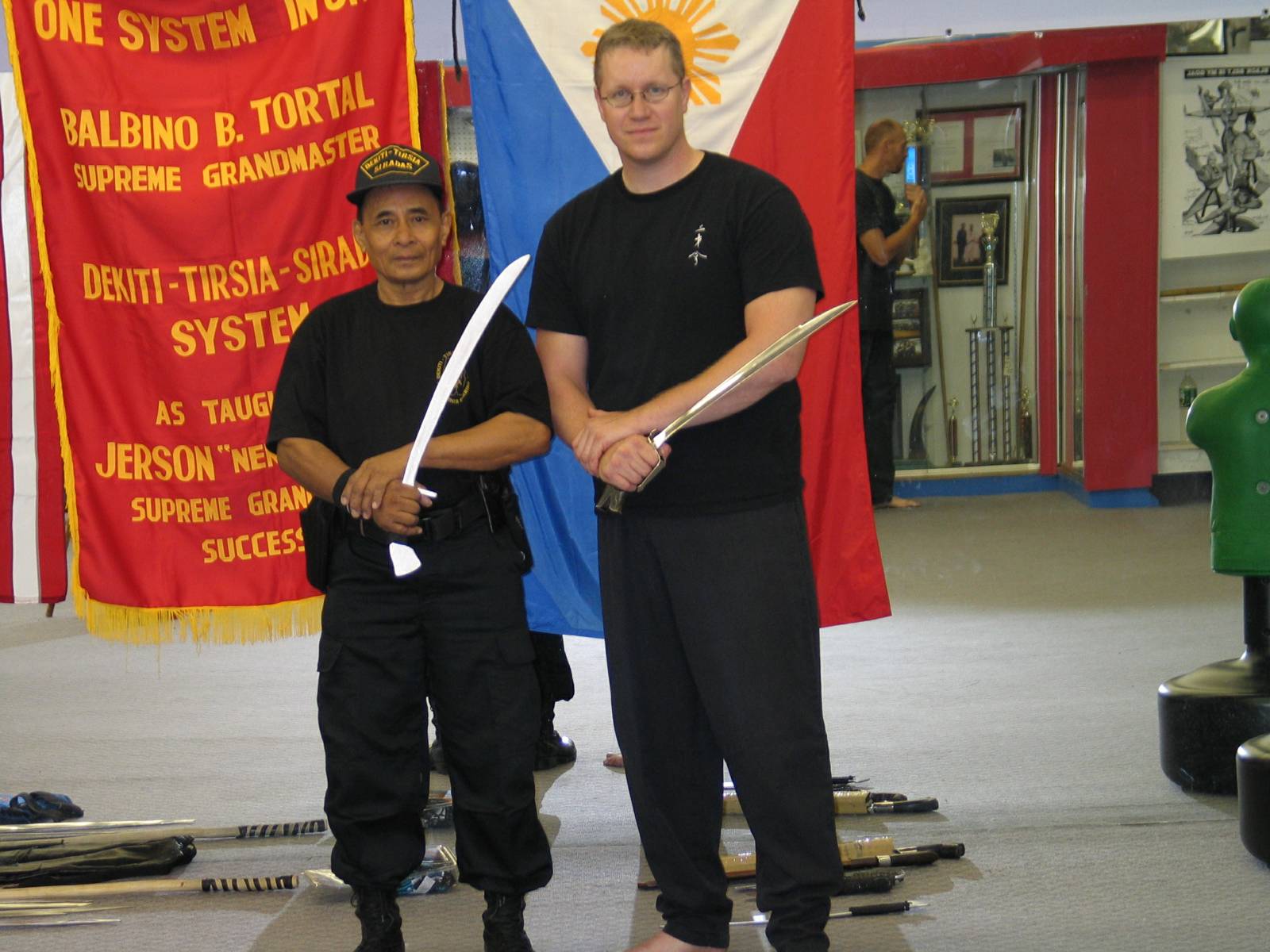
|
| GRANDMASTER NENE TORTAL AND SENSEI PENCE |
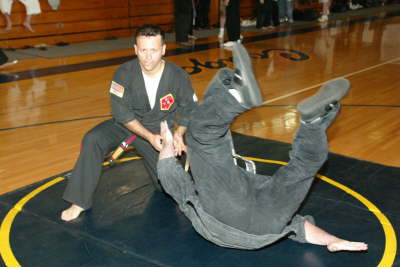
|
| The bigger they are the harder they fall! |
"Kempo does not mean violence. If you were to ask me who, in American history, was the best master of kempo,
I should say Abraham Lincoln. I should choose Lincoln because of his honesty and gentle disposition. He was gentle as a woman
and his faith was like a child. But to protect human rights he fought wholeheartedly and with unwavering determination to
win. Though the odds were overwhelming, he would still fight for the right This is the mark of a true master of kempo." -James
Masayoshi Mitose, from his book What is Self-Defense?
" Enlightenment is realizing the fact that you and I and everyone else are looking
for someone to save us from ourselves. And enlightenment is realizing that the someone you’re looking for is yourself.’
"
Peter Urban, father of American Goju-ryu Karate
1934 - 2004
| Ping Shen Tao |
|
|
| Peaceful Spirit Way |
 |
 |
 |
 |
FOUR KINDS OF DISCIPLES
A poor disciple utilizes a teacher's influence.
A fair disciple admires a teacher's kindness.
A good disciple grows strong under a teacher's discipline.
The best disciple grows to be better than the teacher.
Understanding the past helps one understand the present. If we do not learn from the past then
we are doomed to repeat it - for good or for bad.
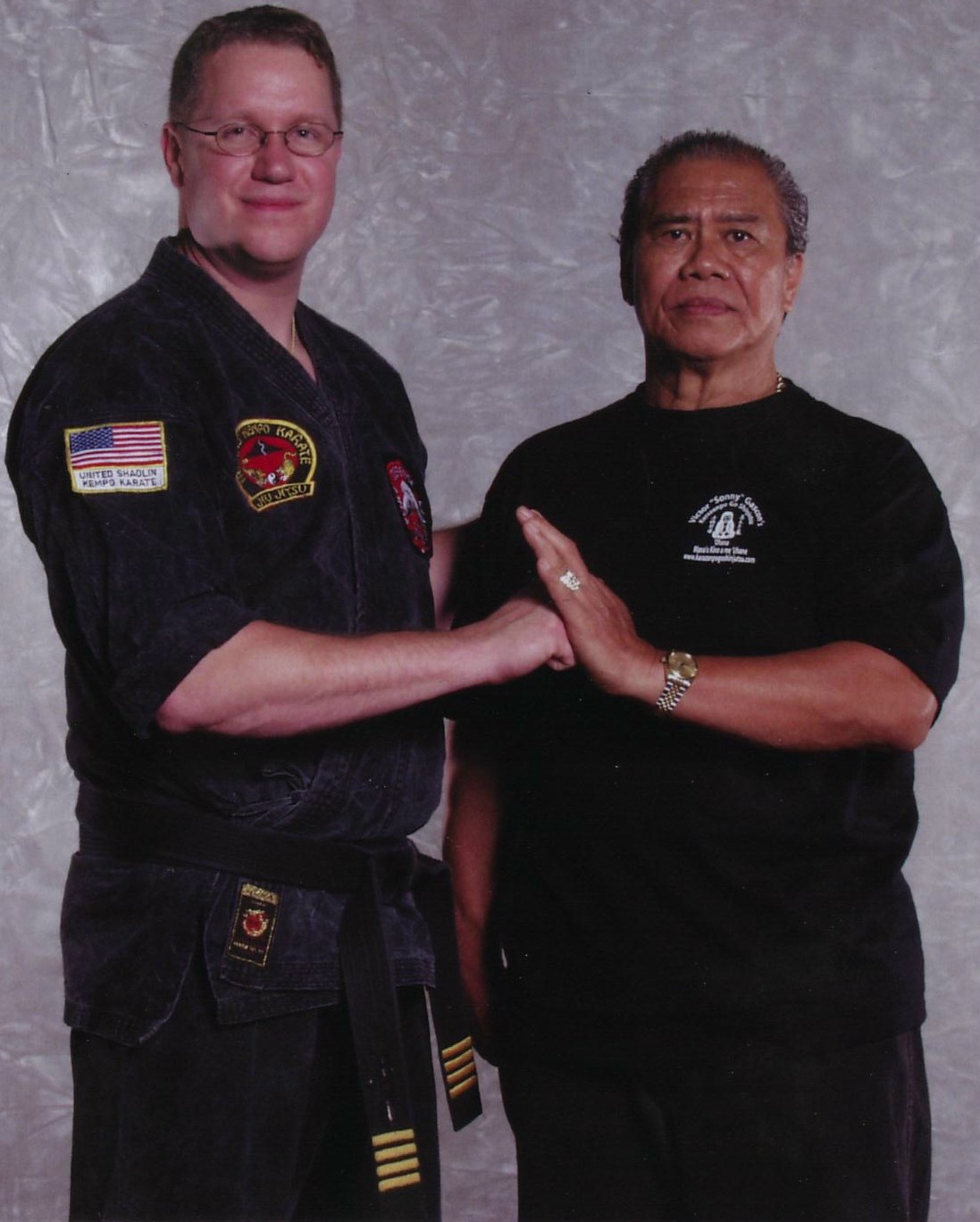
|
| Sensei Kevin Pence with G.GM. Sonny Gascon |
|
|
|
|
|
|
Other bio's of people we "should know".
Choki Motobu
Although we are not sure of Choki Motobu's total involvement in Kenpo, if any
I have decided to include this short biography of this great martial artist who is also rumoured to be James Mitose's uncle.
Choki
Motobu was born in Akahira village Shuri, the old capital of Okinawa, in 1871. There has been much false information printed
about Choki Motobu, which only recently has been cleared up by his son Chosei Motobu.
It has been often stated that Choki Motobu, as third son of a high-ranking family,
did not receive the same level of education as his brothers, and did not learn his family's art of Udunde, as this was pasted
on to the oldest son only. Choyo Motobu was the the eldest son of the Motobu family. These assertions are absolutely false.
Rumors about Choki Motobu's education and training were spread on mainland Japan to discredit him!
Choki Motobu was born into a high-ranking family, his father was Choshin Motobu,
an aji or lord of the highest level.
Choki Motobu trained every day, lifting stone weights and hitting the makiwara
(striking post). He would strike the makiwara a thousand times a day. Motobu would sometimes sleep outside, (when he slept
inside the dojo he would lie on the hard wooden floor, without a mattress), and if he woke up during the night, rather than
turning over and going back to sleep he would get up and hit the makiwara. Motobu was also very agile and quick and he got
the nickname "Motobu-saru" (Monkey Motobu), not because of his rough behavior, but because of his remarkable agility in climbing
trees and moving from branch to branch as nimbly as a monkey.
Choki Motobu's idea of a good training session was to go down to Naha's entertainment
district. This area was well known for street fighting and Motobu picked up valuable experience in this way. Being bigger
and stronger than the average Okinawan he usually won these fights, but there was one occasion when he tackled a man called
Itarashiki and was well beaten. This Itarashiki was a karate expert and the defeat only made Motobu more determined to train
hard and learn more about karate.
Choki Motobu was able to get instruction from several leading experts, because
of Motobu's upper-class birth. Motobu originally studied karate with the famous Ankoh Itosu, the leading master of Shuri-te.
He later studied with Kosaku (Bushi) Matsumora and with Master Sakuma. However, Motobu's karate always seemed to bear his
own instinctive stamp, arising no doubt from his independent nature and his fighting experiences. He always emphasized practicality,
and in time many people came to regard him as the best fighter on Okinawa.
It was only after he moved to Osaka, mainland Japan, in 1921 that he became known
in Japanese martial art circles. What brought Motobu to the attention of the Japanese was his victory over a Western boxer
in a kind of all-comers challenge match in Kyoto, Japan. For the record, the story states that Motobu knocked the boxer unconscious.
Choki Motobu was over 50 years old when he defeated the Western boxer!
So spectacular it was featured in "Kingu", Japan’s most popular magazine
of the era, the victory sadly did little for Motobu personally. Illustrations used in the magazine implied the victor was
Gichin Funakoshi, a man inferior in both social status and fighting ability to Motobu, infuriating the latter, and ensuring
instant fame for Funakoshi who went on to found the Shotokan style of karate and become a karate legend.
Motobu authored two books on martial arts, titled Okinawan Kempo Tode Jutsu Hen,
1926, and Watashi no Karate Jutsu, 1932. In 1940, Choki Motobu returned to Okinawa and died there in 1944.
Choki Motobu and his wife Nabi (Morishima) had four children: Choko, Shige (a daughter),
Choso and Chosei (born in 1925). Choko and Choso died during W.W.II. Shige passed away in the mid 1980's.
The Motobu family art of Motobu-ryu continues today, as it was learned from his
father, by Chosei Motobu. He is the president of the Nihon Karate-do Motobukai and the head of the Motobu-Ryu Daidokan, the
dojo established by Choki Motobu., and is continued to be taught by him today. For a great look at the martial arts of Choki
Motobu, I highly recomend The Karate of Choki Motobu as taught on video by his son Chosei Motobu.
His students included Shoshin Nagamine (Matsubayashi Shorin Ryu), Yasuhiro Konishi
(Shindo Jinen Ryu) and Hironori Otsuka (Wado Ryu), all of whom formed their own karate styles based, in part, on his teachings.
James M. MitoseKenpo was brought to Hawaii and first taught openly in 1942 by James Masayoshi
Mitose (with persuasion from his friend Robert Trias, from Shuri-ryu Karate, the "Father of American Karate," who in Phoenix,
Arizona, in 1946 was the first to open a Karate dojo in the United States).
James Mitose was born in Hawaii on Dec. 30, 1916. The second child of his father Otokichi Mitose
and mother Kiyoka Yoshida, James M. Mitose was sent to Japan as a child to live with his mother’s family and was schooled
in his family’s art, Kosho-ryu Kenpo. Thus James Mitose became the 21st Great Grand Master of Kosho-ryu.
James Mitose returned to Hawaii, in 1937, and formed the Official Self-Defense Club and
taught from 1942 to 1946 where he promoted four people to Shodan (Black Belt). They are, in chronological order, Thomas Young,
Jiro Nakamura, Arthur Keawe, and Paul Yamaguchi.
Note: William Kwai Sun Chow was promoted to Black
Belt by Thomas Young, not by James Mitose.
James Mitose left Hawaii in 1954 for the mainland United States where he would spend the remainder
of his life, although he did take frequent trips to Japan. He taught only one student on the mainland, Terry Lee (Nimr Hassan),
for a period of one year.
James Masayoshi Mitose died on March 27, 1981.
Note: James Mitose spent time in Okinawa and was friends with many
great martial artists, such as Yamaguchi Sensei of Goju-ryu, and many others.
Morihei Ueshiba, founder of Aikido, was also a friend of James Mitose. Ueshiba
Sensei specified in his will that James Mitose should be given the title of "Remonstrant" (overseer)
for all Aikido in America!
William K .S. Chow
William Kwai Sun Chow was born in Honolulu, Hawaii, on July 3, 1914. William Chow
was also known as "Thunderbolt" because of his incredible speed and power. He spent most of his life practicing and perfecting
his martial arts; he became quite famous for his martial prowess and excellent memory of techniques.
It has been said by many that besides his Kenpo training with James Mitose, he also trained
in Gong fu. But no one can seem to verify this. One thing to note, Gong fu, as many of you may know, derives its self-defense
techniques from its forms (kata). William Chow never taught any Gong fu forms.
William Chow, although promoted to Black Belt by Thomas Young, was one of James Mitose’s
top students and a close friend. He left James Mitose in 1949, after becoming an instructor, and opened his own Kenpo school.
It was William Chow who coined the term "Kenpo Karate" to distinguish his system from James Mitose’s Kenpo Jiu-jitsu,
although both styles were the same. William Chow then took the title "Professor" and renamed his system Go-Shinjitsu. Some
twenty years later, William Chow renamed his system "Chinese Kempo of Kara-Ho Karate."
William Chow died in Honolulu on Sept. 21, 1987
Adriano Emperado
Kajukenbo was developed by Emperado, who studied Kenpo under William K.S. Chow and was one
of the top students. Kajukenbo is an eclectic system that was founded by Adriano Emperado.
Siju Adriano Emperado, founder of the Kajukenbo Self-Defense Institute of Hawaii, was born in
Honolulu, Hawaii, June 6, 1926. Professor Emperado grew up in the martial arts and was skilled in many different styles, including
Escrima, Jujitsu, Karate, Gong Fu, Hawaiian Lua, American Boxing, Wrestling, and Kenpo under William K.S. Chow. Adriano Emperado
received his Shodan from Chow and later his instructors diploma from James M. Mitose. Eventually Emperado would receive his
5th degree Black Belt from Chow.
The title of Professor was given to Emperado by Professor Lum and Professor Wong of the Chinese
Physical Cultural Society of Hawaii and Master Ho Gau of Hong Kong to represent Choi Li Fat Ga. Professor Emperado was elected
to the Black Belt Hall of Fame in 1991 for his accomplishments and contributions to the martial arts community. Presently,
the Professor holds the highest title in Kajukenbo, 10th degree.
Kajukenbo was synthesized in the Paloma settlements of Hawaii during the years 1949-1952. Five
practitioners of their respective martial arts developed Kajukenbo to complement each others styles to allow effective fighting
at all ranges and speeds.
The five original founding members were:Peter Choo - Karate
Frank Ordonez - Jujitsu Joe Holke - Judo Adriano Emperado - Kenpo and Escrima Clarence Chang - Gong Fu
The word Kajukenbo is derived from the letter of the styles that contributed to
the creation of the art. Together they make up the Kajukenbo motto: Through this fist art one gains long life and happiness.
KA (long life) - comes from the word Karate. The karate influence was from Tang
Soo Do (Korean Karate) brought by P.Y.Y. Choo.
JU (happiness) - comes from Judo and Jujitsu. The judo and jujitsu influence was
from Kodenkan Danzan Ryu brought by Joe Holck and Se Keino Ryu brought by Frank Ordonez.
KEN (fist) - comes from Kenpo. The kenpo influence was from Kosho-ryu Kenpo brought
by Adriano Emperado.
BO (style) - comes from Chinese and American boxing. The Chinese boxing influence
was from Northern and Southern styles brought by Clarence Chang.
Emperado and the four other martial arts masters began working on the amalgamation
of their knowledge to form "Kajukenbo". Each of the five men spent the next couple of years working on their techniques in
such a way as to complement each others’ styles to allow effective fighting at all ranges and speeds.
To test the effectiveness of their original techniques the five founders would
get into fights around the Palamas settlements. If the technique succeeded consistently in a real street fight, it was kept
as part of the system. From these field test came Kajukenbo's Quins (known as the Palomas sets (forms or kata), Natural laws
(self-defense), Tricks (close-quarters fighting), and grab arts (escapes). Through the trial and error testing of each of
their techniques out on the streets, they devised one of the most effective systems of martial arts to date.
The first Kajukenbo school was opened in the Palm Settlement, and operated by Adriano
Emperado, and his brother Joe. The brutal training that took place there is legendary. Broken bones were an everyday occurrence.
In time the number of students in the school soon dwindled to a dedicated few. Those who remained developed into tough martial
artist. Emperado's school turned out several future instructors who would themselves leave a mark on the international martial
arts community, including Al Dacascos, and many others.
Professor Emperado is credited with saying "Practice was not over until their was
blood on the ground."
The system has grown such that there are currently hundreds of Kajukenbo schools
and it is taught in countries throughout the world.
Edmund K. Parker
Edmund Kealoha Parker was born in Hawaii on March 19, 1931, and raised a devout Mormon.
He began his martial arts studies with judo, becoming a Black Belt at the age of fifteen, and excelling in amateur boxing
as well. Ed Parker was introduced to William Chow and it was then he knew that "kenpo would become my life’s work."
Parker continued to study with William Chow off and on, while attending Brigham Young University in Provo, Utah, (going back
to Hawaii periodically) and serving in the coast guard, stationed in Hawaii. He received his Black Belt from William Chow
on June 5, 1953.
Parker opened his first school in Provo in 1954. Parker moved to Pasadena, California, in 1956.
He remained in Pasadena, teaching the "Original" Kenpo he had learned from Chow, until 1960.
In 1961, with help from Gong fu master James (Jimmy) Wing Woo, Parker developed
"Traditional Chinese" Kenpo. Woo would develop most of the forms and sets which we now perform, with help from Parker’s
first black belt James Ibrao and Parker himself. Parker also removed most of the Jiu-jitsu techniques including the falls
and rolls. Parker then removed most of the self-defense techniques, from 600 for Godan or fifth-degree black belt (over 400
were required for Shodan or first degree black belt), down to 178 techniques in total for the entire new system, which is
now referred to as "Ed Parker’s American Kenpo Karate." Ed Parker was an incredible martial artist and innovator,
and was a definite pioneer of martial arts in North America.
Edmund K. Parker died in Honolulu, Dec.15, 1990. The "Magician of Motion"
will always be remembered and missed.
James Ibrao
James Ibrao was born November 3, 1937, in Waialua, Hawaii. Ibrao excelled in sports,
specifically basketball. At only five feet nine inches he was still able to slam dunk.
James Ibrao moved to the mainland and eventually made his way to California in 1956. He was
introduced to Ed Parker and was so impressed with the power, quickness, and innovated moves of Ed Parker that he began
taking lessons the next day with him and his four other students. James Ibrao excelled; he lived, ate, and slept Kenpo. In
only nine months, he became Ed Parker’s first Black Belt (Shodan).
In 1960, Ed Parker and James Ibrao went to San Francisco to visit Chinese Martial Arts schools.
It was there that they found Grand Master James (Jimmy) Wing Woo and invited him to Los Angeles to document his knowledge
in books and to incorporate the characteristics of Gong fu into Kenpo. James Woo would develop, with the help of Ed Parker
and James Ibrao, most of the Kata (forms) and sets, which we still perform today. Many techniques and the high kicks, double
kicks, etc., were developed by James Ibrao.
It was also around this time that James Ibrao was asked to try out for the Harlem Globetrotters.
He made the team and toured with them for two years, until 1964. When Ibrao returned to Los Angeles, he didn’t return
to his studies with Ed Parker, he instead chose to study with James Woo and unlock the mysteries of the Chinese Martial Arts.
But James Ibrao never left his Kenpo roots.
James Ibrao is still teaching today. He has developed his own system, Jun Bao Wu Shu
Kung- Fu . It is a hybrid of Kenpo, Gong fu, Wu Shu, and the practical application of the arts for defense, competition,
and for life.
Will, Al and Jim Tracy
The
Tracy brothers began their martial training in fencing, boxing, and wrestling. They embarked on their study of Kenpo with
Ed Parker and his first Black Belt, James Ibrao, in 1957, while attending college as pre-law students. Over time they developed
a close relationship with Mr. Parker, and soon after Mr. Parker turned all the teaching of beginner and intermediate classes
over to the Tracy brothers, who would develop an order in which the techniques would be taught, and the advanced classes were
run by James Ibrao.
Al Tracy was the powerhouse of Ed Parker’s studio, and, as seen in the
brochure used in 1962-64 by Ed Parker, Al Tracy did all
the breaking demonstrations. The Tracy brothers would also run Mr. Parker’s studio when he would periodically return
to Hawaii.
There has been question as to whether or not Al and Jim Tracy received their Black Belts (Shodan)
from Ed Parker. In the listed in the original "Infinite Insights", by Ed Parker, you can see that Al and Jim Tracy are listed
as Black belts under Ed Parker, first generation. They also have the largest number of Black Belts listed under their tree
Al Tracy was the fifth person promoted to Black Belt (Shodan) January 2,1962. Certificate dated January 7, 1962.
Jim Tracy was the sixth person promoted to Black Belt (Shodan) January 2,1962. Certificate
dated January 7, 1962.
Will Tracy received his Black Belt (Shodan) in 1961, under both William K.S. Chow and Great
Grand Master Fusae Oshita (James Mitose’s sister).
In the spring of 1962, the Tracy brothers opened their first studio in San Francisco, which
was named Kenpo Karate Studio and was the northern branch of Ed Parker’s organization. It was there that the Tracy brothers
created the three new Kyu ranks and the Kenpo "colored belt system". Ed Parker adopted the new 8-kyu system, but rejected
the colored belts until finally converting to the Tracy color belt system in 1966. The Tracy brothers also created belt manuals
(which contained 40 techniques per belt at that time) and gave the techniques names, like Attacking Circle, Raising the Staff,
etc.
The Tracy brothers opened a second school, in Sacramento, in 1962, and a third, in San Jose,
in 1963, and later changed the name of the schools to Tracy’s Kenpo Karate.
Ed Parker turned the Kenpo Karate Association of America (KKAA) over to the
Tracy brothers and then formed the International Kenpo Karate Association (IKKA). The Tracy brothers agreed to join the IKKA,
on the condition that they could keep the standards of teaching of the KKAA for their own students.
In 1964, the Tracy Brothers were promoted to 3rd Degree Black Belt (Sandan).
Ed Parker promoted Al Tracy to 3rd Degree Black Belt on December
4, 1964.
The Tracy brothers later opened schools throughout California, as well as other states,
and formed the Tracy’s International Studios of Self-Defense.
By 1982, Ed Parker had changed what he called American Kenpo, so much so as to make it in Parker’s
own words, "no more than 10% Kenpo." It was around this time that the Tracy’s completely broke from Ed Parker.
Ralph Castro
Originally from Honolulu, Hawaii, Ralph Castro began his training in boxing, introduced
to him by his father, Boss Castro Sr., famous in the Hawaiian boxing community. Ralph Castro began studying Kenpo, under William
Chow in 1955, rising up through the Black Belt ranks.
Ralph Castro moved to the Mainland (San Francisco), and began teaching Kenpo in 1958. He later
founded the International Shaolin Kenpo Association
Through his years of teaching, Ralph Castro has taught all the Original Kenpo techniques, applications,
and philosophy taught to him by William Chow. Ralph Castro also developed numerous "key dances" and sets to enhance Kenpo.
Great Grand Master Ralph Castro promoted his son, Professor R. Robert "Rob" Castro, to 10th
Dan and conveyed the title "Grand Master", at the Annual Promotion & Awards Ceremony, on December 12, 1998. Grand Master
Rob Castro was also designated to be the next in line to continue the legacy and leadership of Shaolin Kenpo from his father. Great Grand Master Ralph Castro now devotes more time to the business of seminars and world travel as
well as work on his biographical book.
 
|
|
|
|
|
|
 |
|
|
|
|
|
|
|
|
|
|
|